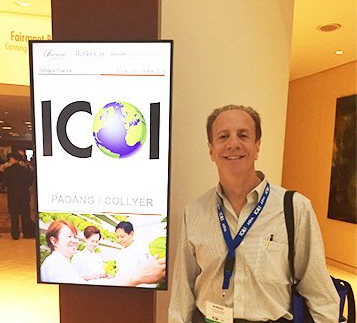Tooth Decay Expert in Philadelphia, PA
Few people were spared the ordeal of losing teeth, often early in life. The combination of tooth decay and periodontal diseases left 17 million people age 45 and older — about three out of 10 Americans — with none of their natural teeth. In fact, the most common cause of WWII draft rejection was too few teeth because of tooth decay. Until the 1970s, the cause of tooth decay continued to be a subject of debate, with some believing dietary deficiencies were the culprit and others focusing on oral bacteria. This uncertainty made effective prevention strategies difficult, if not impossible, to create. Moreover, brushing one's teeth each day was a fairly recent hygienic step forward in dental care, reportedly popularized by returning soldiers from World War II.
The NIH completed the first water fluoridation study that established the benefits of fluoride in fighting tooth decay. Several years would pass before fluoride, the mainstay of modern prevention strategies, would become a common ingredient in water, toothpaste, and other products.
Tooth decay was considered an irreversible disease process. Once a cavity started, the only remedy was to drill out the decay and fill the tooth with a restorative material.
Tooth decay is no longer the national epidemic it was a few generations ago. Millions of American children now have little or no decay, and total tooth loss or edentulism is now much less common. Without research progress in the fight against dental caries and periodontal diseases, there would be an additional 18.6 million Americans age 45 and older with none of their natural teeth.
Prevention is now the mantra in American dentistry. In addition to improved products to fight tooth decay, more people benefit from preventive dentistry, including the use of fluorides and dental sealants to prevent decay. Compared to previous years, these techniques have made it possible for millions more people to keep their natural teeth for a lifetime. It is estimated that from 1979 through 1989 alone, the American public saved more than $39 billion in dental expenditures due to the power of prevention. Since the 1950s, the total federal investment in NIH-funded oral health research has saved the American public at least $3 for every $1 invested.
New technologies will further prevent tooth decay. Research is underway to develop powerful imaging tools that can detect the earliest demineralization of tooth enamel. These tools will allow the application of special solutions to remineralize the tooth and reverse early decay.
Examples of NIH research projects funded in 2010 include "Development of high performance, caries-inhibiting dental nano-materials" and "Enamel mineral formation during murine odontogenesis."
Advances in DNA sequencing produced vast gene databases for many of the bacteria that cause tooth decay. These bacterial blueprints now allow scientists to identify specific genes essential to the decay process, and it may be possible in the future to directly target these genes and inactivate the ability of these bacteria to cause decay.
The bacteria that cause tooth decay live in complex communities called biofilms. Great strides have been made in learning how the bacteria communicate with one another within this biofilm. By jamming the communication signals among the bacteria, it may be possible one day to disrupt the biofilm and end the threat of tooth decay.
For more information, contact our office or visit the National Institute of Health.
Schedule Your Consultation
Tooth Decay
We will get back to you as soon as possible.
Please try again later.
The Tabas Center For Advanced Dentistry
2534 S Broad St,
Philadelphia, PA 19145
Our Primary Service Areas
Office Hours
- Mon - Wed
- -
- Thursday
- -
- Friday
- Closed
- Saturday
- -
- Sunday
- Closed
Content Reviewed By
All Rights Reserved | The Tabas Center for Advanced Dentistry

